Pastures and Animals
Meet our sheep!
Our sheep are a mix of several breeds that thrive in our diverse pasture system. It is fun to interact with their various personalities on a daily basis!
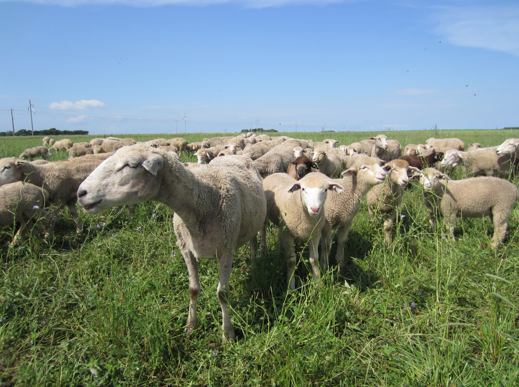
Because the sheep are a mixed breed, we occasionally end up with surprises – The last couple years we had a few black lambs born – can you spot them in the picture?
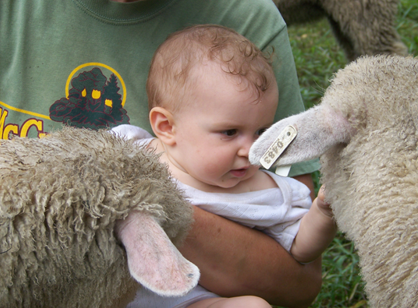
Meet our cows!
Our cows are British White or British White crosses. Don’t they look great with their unique “Siamese cat”-like coloring? Our family (kids included!) enjoys working and interacting with this gentle breed known to produce high-quality, fine-textured meat on pasture.
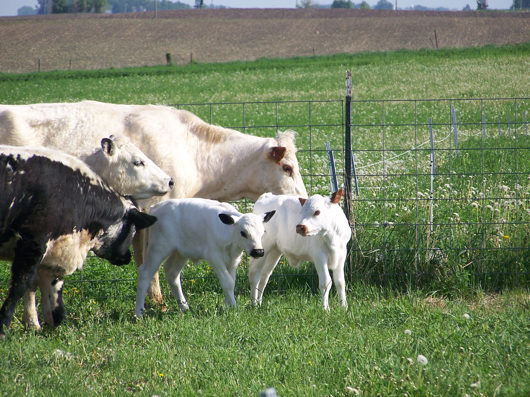
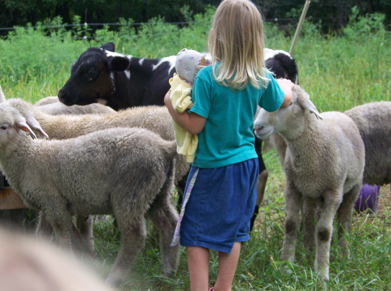
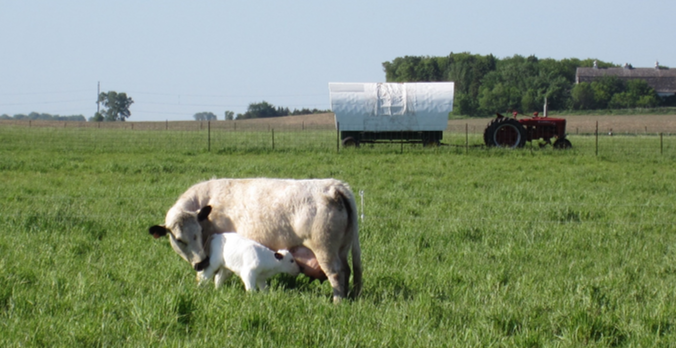
Meet our pastures!
Blue flowers, yellow flowers, white flowers, purple… Tall grass, short grass, shiny grass, bunch grass… we pride ourselves on our diversity! Singing bobolinks, blissful bees, skipping butterflies, shimmering spiders, zipping dragonflies, and a host of others all call these pastures home alongside our peacefully munching cows and sheep. Diversity of plants makes for healthy soil, which makes for healthy plants, which makes for healthy, happy cows and sheep!
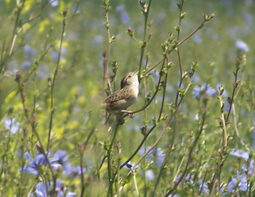
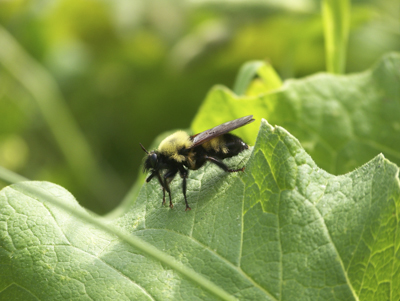
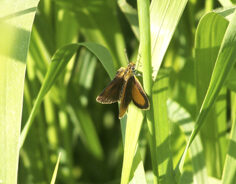
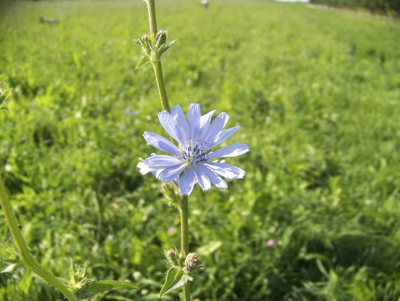
How we graze
We rotationally graze, which mimics the herds of bison that once moved across our landscape. This system allows plants to grow tall and healthy (before being grazed) while creating ecological balance in the whole system. The ecological benefits of rotational grazing are beginning to be recognized and employed by conservation organizations such as the Department of Natural Resources (DNR) and the Nature Conservancy to restore grassland ecosystems. Some of the ecological benefits include:
Blooming flowers for pollinators
Because we rotationally graze, large portions of the pasture are not being eaten at any one time, so it gives plants time to grow tall and bloom. Bees and other pollinators benefit because they can choose nectar from numerous different kinds of flowers.

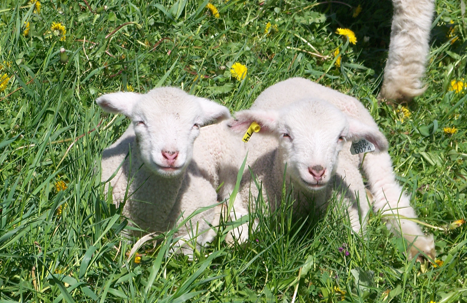
Habitat for native ground-nesting bees
There are many native bees that are important pollinators, but with so much of the landscape as plowed crop fields, those that nest in the ground can be put at risk of extinction. Our non-tilled perennial pastures can accommodate them well.
Reduction of atmospheric greenhouse gasses
Healthy, non-tilled perennial pasture can take a large amount of carbon dioxide (a greenhouse gas) out of the atmosphere (through photosynthesis) and store it in the soil via the plant roots. Additionally, healthy soil is home to methanotrophic bacteria, or bacteria that live on methane. In one acre of healthy soil, there can be enough of these bacteria to oxidize the methane produced by 65 cows per year.1 By pulling carbon dioxide and methane out of the atmosphere, our pastures are reducing the potential for climate change.
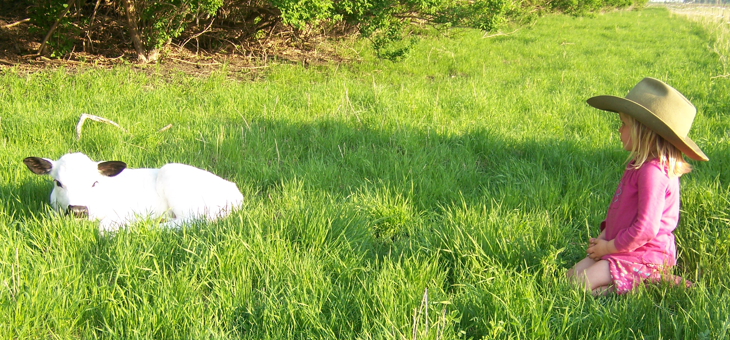
Deeper roots
With deep roots, plants can pull up minerals that shallow-rooted plants can’t reach. These minerals are incorporated into the plant, making for a healthier plant. By eating these healthy plants, the sheep and cows can reach their full nutritional potential. In turn, this will also benefit you as you enjoy the nutrient-dense meat that we raise on our pastures. Deeper roots also encourage biological activity farther down in the soil profile, making additional potential for carbon sequestration and soil building.
Taller plants
More wildlife habitat: We generally leave 4-6 inches of plants (with random taller stems) in a pasture when we move the animals on, and this is great habitat for many birds, insects, and small mammals. Our pastures are teeming with other creatures! Taller grazing heights also provide a more balanced diet for the cows and sheep than a pasture that is always eaten short.
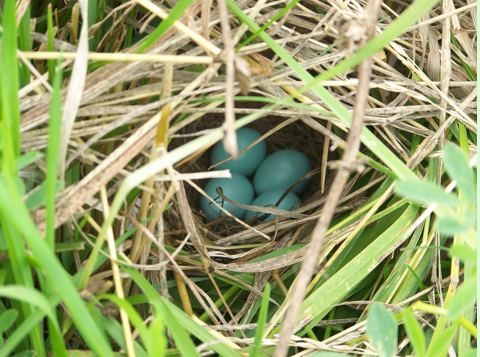
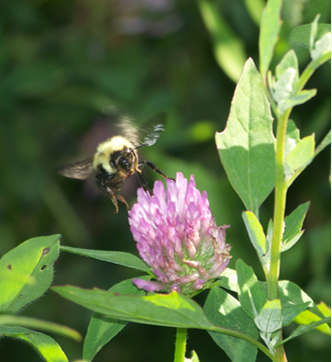
Natural nutrient cycling
By eating the plants and dropping manure, and stepping down plant stems, the grazing cows and sheep put the plant residue right back in contact with soil microbes who can break it down to be food for the next generation of plants. When feed (hay or grain) is hauled off of the land and fed to animals concentrated in the feedlot, the land suffers from the removed nutrients, while the concentration of nutrients in a feedlot can have negative consequences. Grasslands that are never grazed can begin to deteriorate in quality and diversity when the large volume of spent plant material is never stomped down to where the soil microbes can further break it down and re-start the nutrient cycle. A growing body of recent research is just beginning to rediscover the important role that grazing animals have in promoting and maintaining healthy grasslands.
Reduced soil erosion
All winter, the wind blows across bare crop fields across the Midwest and many other parts of the U.S., making the snow black because there are no roots in the soil to hold it in place and no cover on the surface. In contrast, our soil is safely tucked under a blanket of plant leaves and stems, while the roots wrap around the soil and keep it in place. Topsoil is difficult to replace and is an absolute necessity for growing good food. It is a precious resource!
Better rainfall infiltration
Rotational grazing encourages a diversity of tall plants, and this improves soil structure, allowing rain to infiltrate and be held by soil particles rather than running off the surface (and carrying nutrients and topsoil with it). In this way, our pastures can help mitigate flooding downstream, as the rain is absorbed where it falls.
Manure nutrients are spread evenly across the pasture
By keeping the animals moving across the landscape, manure is never concentrated in one spot, as is often the case with non-rotationally grazed pasture, and is always the case for animals in a feedlot. Instead, manure is deposited in small enough concentrations across the pastures that the microbes can further break it down just as the plants are ready to take up the nutrients again. The sheep and cows seem happy to spread their own manure and we don’t need a tractor, manure spreader, and fuel to do it, as would otherwise be the case for cows and sheep raised in a feedlot!
